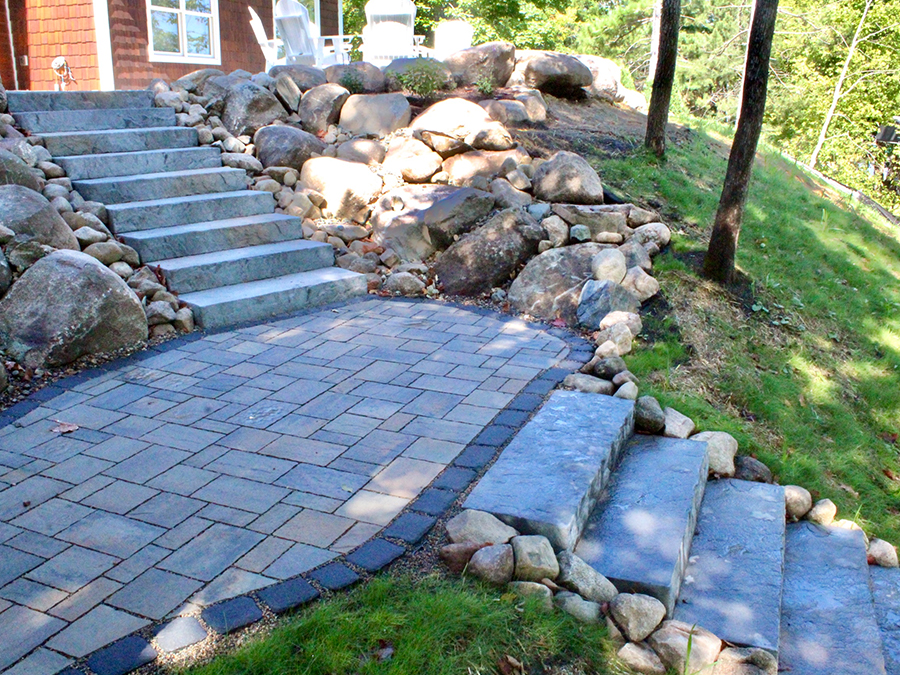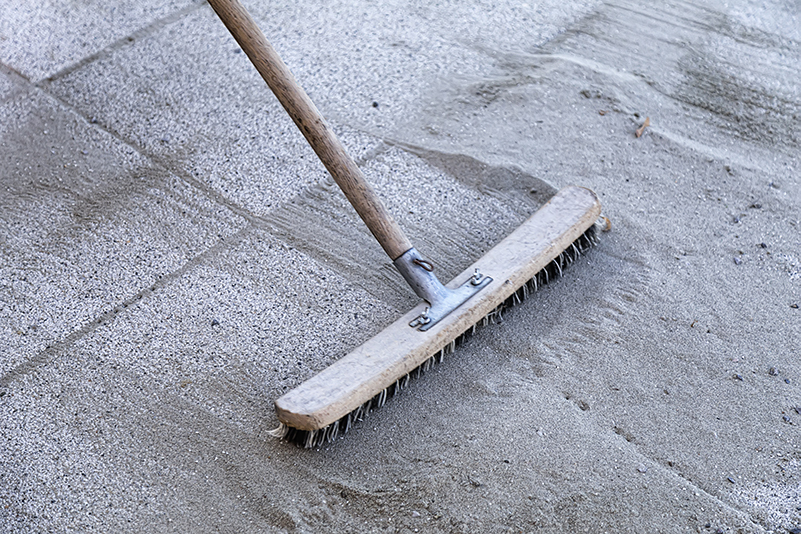We are answering your most asked questions about paver patios and walkways.
First, lets talk about our process when install pavers:
Paver projects will be completed in 4 phases:
Phase I: Excavate and remove all loose materials to a depth of up to 12”. This provides a setting for the gravel base, which will protect your driveway from heaving and uneven settling.
Phase II: Installation and compaction of base materials. 3/4” crushed granular to be installed and compacted in 3” layers to ensure proper compaction. Base shall be sloped away from buildings for drainage purposes at 1” of slope every 10” (exact slope may vary due to site conditions). Next, a 1” base of screeding sand is installed directly on top of the compacted base.
Phase III: Pavers are cut and laid directly on top of the bedding sand. Small gaps in between the pavers is normal and provides space for the jointing sand installed between pavers.
Phase IV: Edging, Compacting, and Finishing. Edge restraints are installed along outside edges to prevent paver shifting. Pavers are then compacted with a plate tamper to settle the pavers into the bedding sand and create a flat, level surface. Finally, polymeric sand is swept into the joints to lock the pavers together and create a durable surface.

 Can I seal my patio/driveway?
Can I seal my patio/driveway?
Absolutely! Though, it is recommended to let a patio go through one full season cycle. This gives the pavers the time to cure, along with the polymeric sand.
 How do I maintain my paver driveway/patio?
How do I maintain my paver driveway/patio?
Household cleaning agents usually can used to remove debris from paver surfaces. A stiff brush should be used to scrub tough stains. Refrain from using any type of metal brushes on paver surfaces, as that can lead to scratches. Pressure washers can be used but can also remove joint sand. If this happens, total lawn care will be able to apply joint sand to repair it.
 What is the white stuff on my pavers?
What is the white stuff on my pavers?
Efflorescence is a naturally occurring process in all concrete products which may appear in the form of a white powdery film on the unit’s surface. Efflorescence may be more perceivable in darker colors. It does not, in any way, compromise the functionality or the structural integrity of the product or your installation. Although efflorescence cannot be prevented, it will wash off over time or it can be cleaned with an industry cleaner.
 What is joint sand?
What is joint sand?
Polymeric sand is a fine sand that is combined with additives that form a binding agent when exposed to water. As the sand particles fuse, the joint between two patio pavers becomes impenetrable and the pavers are locked in place.

Do you have any more questions about paver patios, walkways or driveways?
Comment below or reach out to us and we will answer them!
